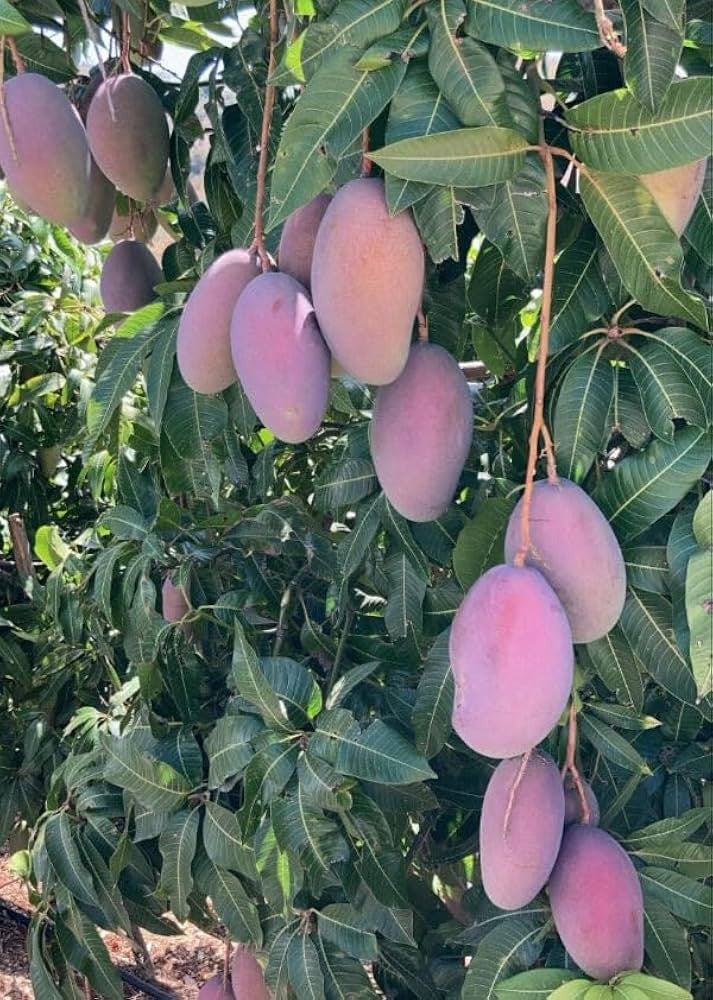Plantparadise
Osteen Mango plant | Buy Osteen Mango plant online
Osteen Mango plant | Buy Osteen Mango plant online
Couldn't load pickup availability
The Osteen Mango is a popular mango variety known for its unique appearance, excellent flavor, and high productivity. Originating from Florida, the Osteen Mango has gained popularity in various regions, especially in Mediterranean climates, due to its adaptability and quality fruit.
Description:
-
Fruit Appearance: The Osteen Mango is medium to large in size, typically weighing between 400 to 600 grams per fruit. The fruit has an elongated oval shape with a slight curvature. The skin is smooth and has a striking color palette, ranging from green to dark purple with a red to magenta blush as it ripens. The skin color is one of the distinctive features of the Osteen Mango.
-
Flesh: The flesh of the Osteen Mango is vibrant orange, juicy, and fiberless, making it very appealing for fresh consumption. The texture is smooth and buttery, surrounding a relatively small seed.
-
Flavor: The Osteen Mango is known for its sweet, mild flavor with a subtle hint of acidity. It has a well-balanced taste with tropical notes, making it a favorite among mango lovers. The fruit has a pleasant aroma that complements its flavor, and it is less acidic compared to other mango varieties, which adds to its popularity.
-
Growth Habit: The Osteen Mango tree is moderately vigorous with a dense, spreading canopy. The leaves are dark green, leathery, and lance-shaped, providing a lush appearance. The tree is well-suited for both in-ground planting and large containers, making it versatile for different growing conditions.
-
Grafting: Osteen Mango plants are commonly propagated through grafting to ensure that the fruit produced is true to the parent plant. Grafted Osteen Mango trees tend to bear fruit earlier than those grown from seed, often producing their first fruit within 2-4 years. Grafting also helps preserve the desirable characteristics of the Osteen variety, such as its color, size, and flavor.
-
Climate: The Osteen Mango is well-adapted to subtropical and Mediterranean climates. It requires full sunlight and well-drained soil for optimal growth. The tree is relatively drought-tolerant once established but benefits from regular watering during the fruiting season. The Osteen Mango is also known for its resistance to common mango diseases, making it a robust choice for growers.
-
Harvesting: The Osteen Mango typically ripens in mid to late summer, depending on the climate. The fruit is harvested when it has developed its characteristic color and has a slight give when gently squeezed. The fruit continues to ripen off the tree, making it suitable for shipping and storage.
-
Uses: Osteen Mangoes are versatile and can be enjoyed fresh, in smoothies, salads, and desserts. They are also suitable for drying, juicing, and making preserves. The attractive color and mild flavor of the Osteen Mango make it a popular choice for culinary applications and export.
-
Ornamental Value: In addition to its delicious fruit, the Osteen Mango tree is also valued for its ornamental qualities. Its dense foliage and colorful fruit make it an attractive addition to home gardens, orchards, and landscapes.
Materials
Materials
Shipping & Returns
Shipping & Returns
Dimensions
Dimensions
Care Instructions
Care Instructions




